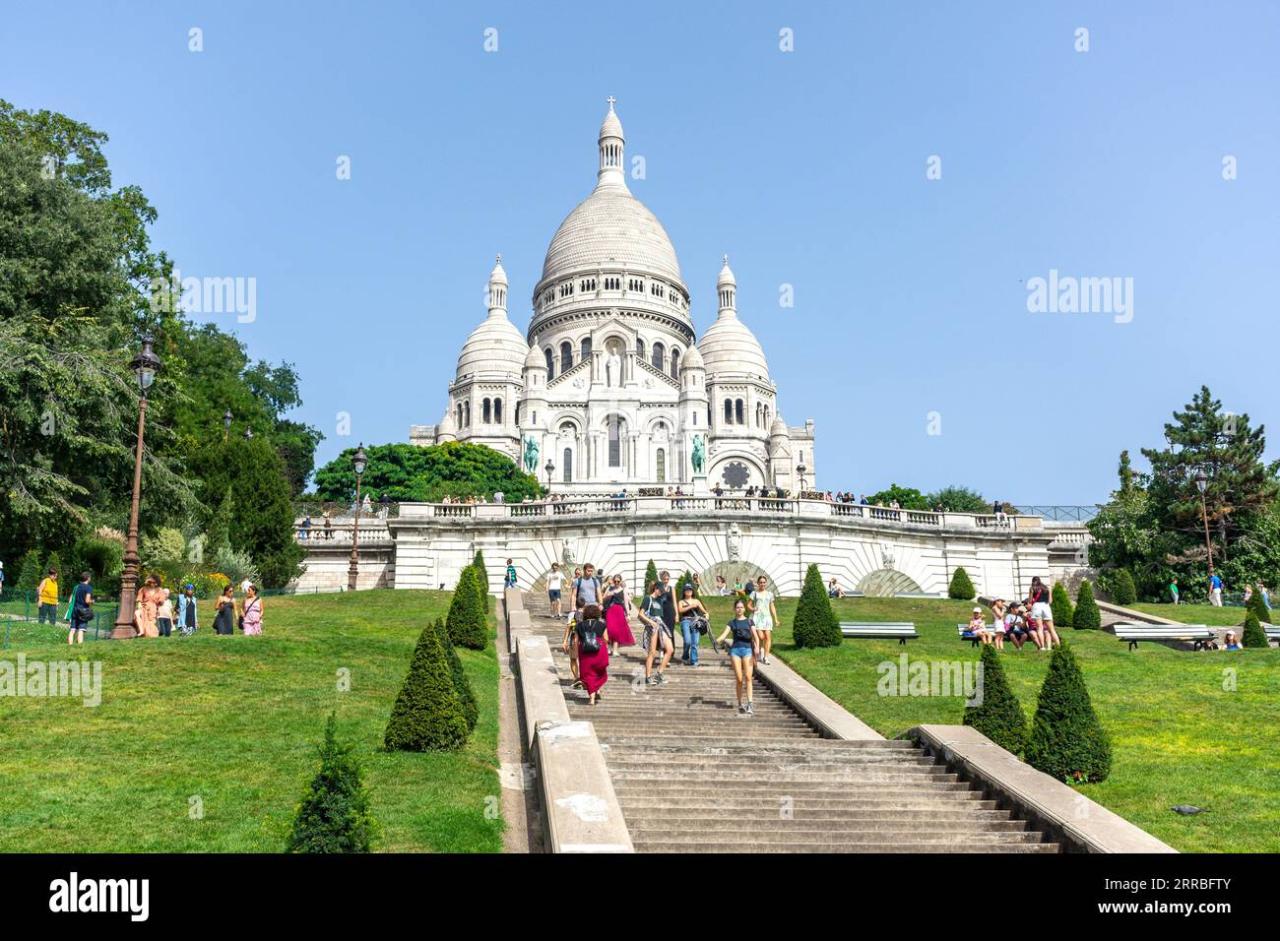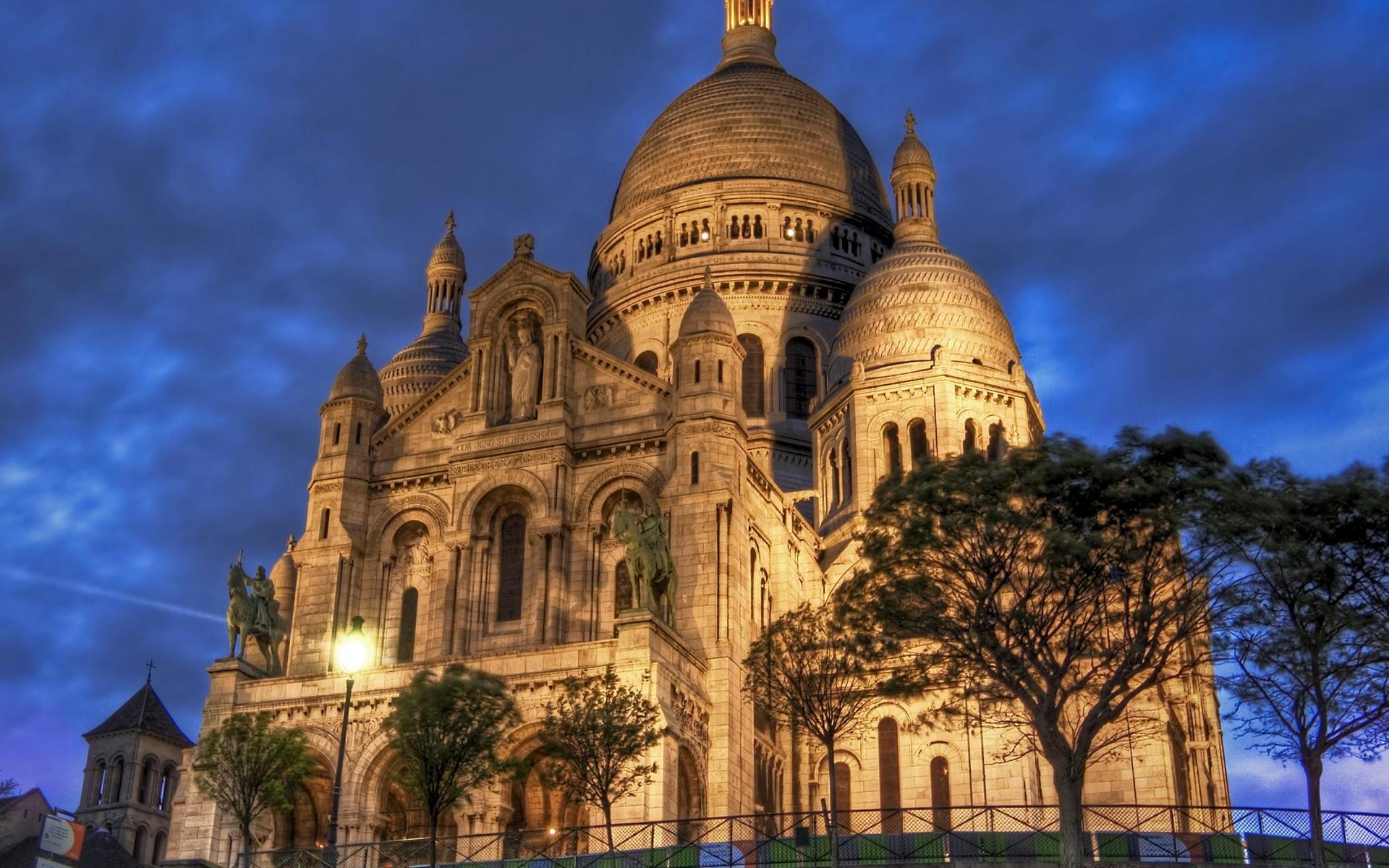Perched atop the highest point of Paris, the Sacré-Cœur Basilica stands as a symbol of both religious devotion and architectural grandeur. With its distinctive white domes and panoramic views, it’s an unmissable landmark that draws millions of visitors each year. One of the most remarkable aspects of the Sacré-Cœur is that entry to the basilica itself is free, making it accessible to people of all backgrounds and beliefs. This article explores the history, architecture, and significance of this iconic basilica, while highlighting the importance of its free accessibility.
A History Rooted in Faith and National Healing
The story of the Sacré-Cœur begins in the aftermath of the Franco-Prussian War (1870-1871). France suffered a crushing defeat, and Paris endured a brutal siege followed by the tumultuous Paris Commune. In this period of national crisis, two prominent Frenchmen, Alexandre Legentil and Hubert Rohault de Fleury, made a vow to construct a church dedicated to the Sacred Heart of Jesus if France were spared further disaster.
Their proposal gained traction, and the French National Assembly officially declared the construction of the Sacré-Cœur Basilica as a matter of national importance in 1873. The basilica was intended to atone for the perceived moral failings of the French people and to restore faith and hope in the nation. The location chosen was Montmartre, a hill with a rich history, known as the site where Saint Denis, the patron saint of Paris, was martyred.
The decision to build the basilica on Montmartre was not without controversy. Some saw it as a symbol of religious conservatism imposed on a historically radical neighborhood. However, the project moved forward, and construction began in 1875, led by architect Paul Abadie.
Architectural Splendor: A Romanesque-Byzantine Masterpiece
The Sacré-Cœur Basilica is a stunning example of Romanesque-Byzantine architecture. Its design draws inspiration from various sources, including Romanesque churches in the Périgord region of France and Byzantine churches like Hagia Sophia in Istanbul. The basilica’s most striking feature is its brilliant white color, which comes from the Château-Landon stone used in its construction. This stone hardens and bleaches over time, ensuring that the Sacré-Cœur maintains its dazzling appearance.
The basilica’s exterior is dominated by four domes: a central dome that reaches a height of 83 meters (272 feet), and three smaller domes. The central dome offers breathtaking panoramic views of Paris. The façade is adorned with sculptures of French national saints, including Joan of Arc and Saint Louis IX, as well as a statue of Christ with his Sacred Heart.
Inside, the Sacré-Cœur is equally impressive. The interior is bathed in soft light, creating a serene and contemplative atmosphere. The basilica’s most notable feature is the vast mosaic above the altar, one of the largest in the world. This mosaic, titled "Christ in Glory," depicts Jesus Christ with his Sacred Heart, surrounded by saints and angels.
Free Entry: A Commitment to Accessibility
One of the most remarkable aspects of the Sacré-Cœur Basilica is that entry to the main basilica is free of charge. This decision reflects a commitment to making the basilica accessible to people of all backgrounds, regardless of their financial means.
In a city like Paris, where many attractions charge hefty admission fees, the free entry to the Sacré-Cœur is a welcome exception. It allows visitors to experience the basilica’s beauty, history, and spiritual atmosphere without having to worry about the cost. This accessibility is particularly important for those who come to the Sacré-Cœur seeking solace, inspiration, or a place for prayer.
The Crypt and the Dome: Optional Paid Experiences
While entry to the main basilica is free, there are two additional areas that require a paid ticket: the crypt and the dome.
-
The Crypt: Located beneath the main basilica, the crypt houses the tombs of several prominent figures associated with the Sacré-Cœur, including architect Paul Abadie. The crypt also contains a collection of religious artifacts and relics.
-
The Dome: Climbing to the top of the central dome is a must for those seeking unparalleled views of Paris. From the dome’s observation deck, visitors can see the Eiffel Tower, Notre Dame Cathedral, and other iconic landmarks. The climb to the top involves ascending a narrow, winding staircase, but the panoramic vistas are well worth the effort.
The Sacré-Cœur Today: A Place of Pilgrimage and Tourism
Today, the Sacré-Cœur Basilica remains an active place of worship, attracting pilgrims and visitors from around the world. Daily Masses are held in the basilica, and the Adoration of the Blessed Sacrament takes place continuously in the chapel.
In addition to its religious significance, the Sacré-Cœur is also a major tourist attraction. Millions of people visit the basilica each year to admire its architecture, learn about its history, and enjoy the stunning views from Montmartre. The square in front of the basilica is often bustling with artists, street performers, and vendors, creating a vibrant and lively atmosphere.
Experiencing the Sacré-Cœur: Tips for Visitors
-
Getting There: The Sacré-Cœur is located on Montmartre, the highest point in Paris. Visitors can reach the basilica by taking the metro to Anvers station (Line 2) or Abbesses station (Line 12) and then walking up the hill. Alternatively, you can take the funicular from the bottom of the hill to the top.
-
Dress Code: As a place of worship, the Sacré-Cœur has a dress code. Visitors are asked to dress modestly and to remove hats and sunglasses before entering the basilica.
-
Photography: Photography is allowed inside the basilica, but flash photography is prohibited.
-
Security: Due to its popularity, the Sacré-Cœur is subject to security measures. Visitors may be required to pass through security checks before entering the basilica.
-
Respectful Behavior: It is important to remember that the Sacré-Cœur is a place of worship. Visitors are asked to be respectful of the religious atmosphere and to refrain from loud talking or disruptive behavior.
The Enduring Legacy of the Sacré-Cœur
The Sacré-Cœur Basilica stands as a testament to the power of faith, the beauty of art, and the importance of national healing. Its free accessibility ensures that people from all walks of life can experience its grandeur and find solace within its walls. Whether you are a religious pilgrim, an architecture enthusiast, or simply a traveler seeking breathtaking views of Paris, the Sacré-Cœur is an unmissable destination that will leave a lasting impression.


